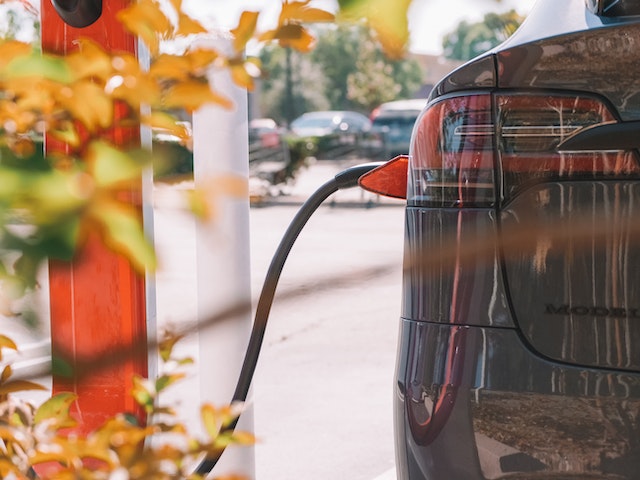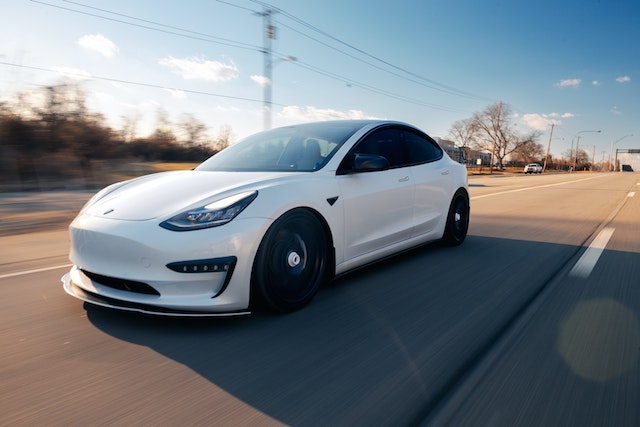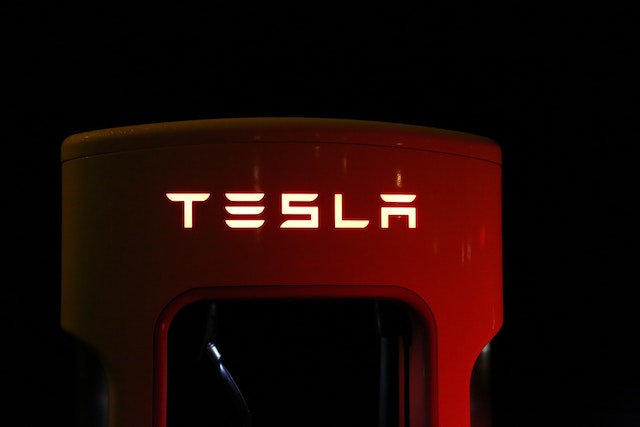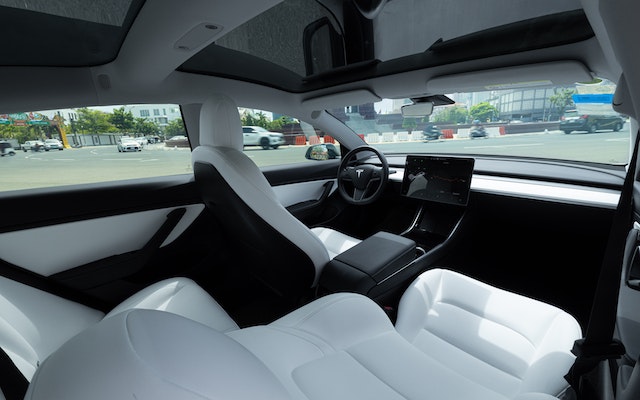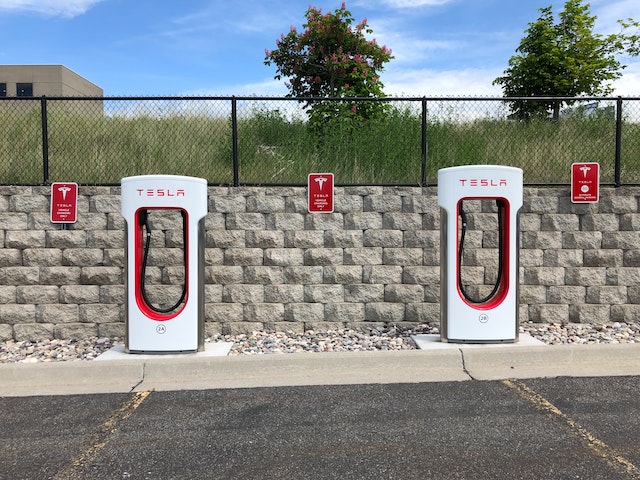How Long Does It Take to Charge a Tesla? A Comprehensive Guide to Charging Times and Methods
Electric cars are becoming increasingly popular as people become more environmentally conscious and seek to reduce their carbon footprint. Tesla, one of the most well-known electric car manufacturers, has been at the forefront of this trend, offering a range of electric vehicles that are both stylish and functional. One of the most common questions people have about Tesla’s electric cars is how long it takes to charge them.
The answer to this question depends on a few factors, including the type of Tesla you have, the charging infrastructure available in your area, and the charging method you choose. For example, the Tesla Model S Long Range has a battery capacity of 100 kWh and can travel up to 402 miles on a single charge. Charging this vehicle from empty to full at a Tesla Supercharger station can take as little as 45 minutes, while charging at home using a standard 120-volt outlet can take up to 4 days.
To better understand the charging process for Tesla electric cars, it is important to know the different charging levels available. Level 1 charging is the slowest and can be done using a standard 120-volt outlet. Level 2 charging is faster and requires a dedicated 240-volt charging station. Finally, Level 3 charging, also known as DC fast charging, is the fastest option and is available at Tesla Supercharger stations and other public charging networks. Understanding these different charging levels and the charging options available for your Tesla can help you determine how long it will take to charge your vehicle.
Understanding Tesla Charging
Charging a Tesla can be a bit confusing for first-time owners, but it’s actually quite simple once you understand how it works. In this section, we’ll cover the basics of Tesla charging, including the different types of charging stations, charging methods, and charging times.
Tesla Charging Stations
Tesla charging stations are designed specifically for Tesla vehicles and are the fastest way to charge your car. There are two types of Tesla charging stations: Superchargers and Destination Chargers.
Superchargers are the fastest way to charge your Tesla, providing up to 170 miles of range in just 30 minutes. These stations are located along major highways and in popular destinations, such as shopping centers and hotels.
Destination Chargers, on the other hand, are slower but more convenient. These chargers are located at hotels, restaurants, and other destinations where you might spend an extended period of time. They provide up to 30 miles of range per hour of charging.
Charging Methods
There are three main charging methods for Tesla vehicles: Level 1, Level 2, and DC Fast Charging.
Level 1 charging uses a standard 120-volt household outlet and provides up to 4 miles of range per hour of charging. This method is best for overnight charging at home or at a hotel.
Level 2 charging uses a 240-volt outlet and provides up to 30 miles of range per hour of charging. This method is best for home charging or at a destination charger.
DC Fast Charging is the fastest method and provides up to 170 miles of range in just 30 minutes. This method is only available at Supercharger stations.
Charging Times
The time it takes to charge a Tesla depends on several factors, including the charging method, the battery size, and the current charge level. Here are some general estimates for charging times:
- Level 1 charging: 12-20 hours for a full charge
- Level 2 charging: 4-8 hours for a full charge
- DC Fast Charging: 30-45 minutes for an 80% charge
It’s important to note that charging times may vary depending on the specific Tesla model and the charging station used.
In conclusion, understanding Tesla charging is essential for maximizing the efficiency of your electric vehicle. By knowing the different types of charging stations, charging methods, and charging times, you can make informed decisions about when and where to charge your Tesla.
Types of Tesla Chargers
Tesla offers several types of charging options to fit different lifestyles and charging needs. The following sub-sections provide an overview of the most common types of Tesla chargers.
Supercharger
Tesla superchargers are the fastest way to charge a Tesla vehicle. They are designed for long-distance travel and can add up to 200 miles of range in just 15 minutes. Superchargers are located along major highways and in popular destinations, making it easy for Tesla owners to travel long distances without worrying about running out of charge.
Wall Connector
Tesla wall connectors are designed for home or office use and offer a convenient and easy way to charge a Tesla vehicle. They can add up to 44 miles of range per hour of charge and are compatible with all Tesla vehicles. The wall connector can be installed indoors or outdoors and can be customized to match the style of the building.
Mobile Connector
The Tesla mobile connector is a portable charging solution that can be used to charge a Tesla vehicle from any standard electrical outlet. It comes with adapters for different types of outlets and can add up to 30 miles of range per hour of charge. The mobile connector is ideal for on-the-go charging and can be stored in the trunk of a Tesla vehicle.
Overall, Tesla offers a range of charging options to fit different lifestyles and charging needs. Whether traveling long distances or charging at home or on-the-go, Tesla owners have access to a variety of charging solutions to keep their vehicle charged and ready to go.
Tesla Models and Charging Times
Model S Plaid
The Model S Plaid is the latest addition to the Tesla family. It is currently the fastest electric car in production, with a top speed of 200 mph and a range of 390 miles. The Model S Plaid can be charged up to 80% in just 30 minutes using a Supercharger, or up to 100% in around 1 hour and 15 minutes.
Model Y
The Model Y is a mid-size SUV that offers a range of up to 326 miles on a single charge. It can be charged up to 80% in around 30 minutes using a Supercharger, or up to 100% in approximately 1 hour and 15 minutes.
Model 3
The Model 3 is a popular mid-size sedan that offers a range of up to 358 miles on a single charge. It can be charged up to 80% in around 30 minutes using a Supercharger, or up to 100% in approximately 1 hour and 15 minutes.
Model S
The Model S is a full-size luxury sedan that offers a range of up to 412 miles on a single charge. It can be charged up to 80% in around 30 minutes using a Supercharger, or up to 100% in approximately 1 hour and 15 minutes.
Model X
The Model X is a full-size luxury SUV that offers a range of up to 371 miles on a single charge. It can be charged up to 80% in around 30 minutes using a Supercharger, or up to 100% in approximately 1 hour and 15 minutes.
It is important to note that the charging times listed above are for Supercharger stations. Charging times may vary depending on the type of charger being used and other factors such as temperature and battery condition. Additionally, charging times may be longer if the battery is nearly depleted or if the charging station is being used by multiple vehicles.
Charging Levels Explained
When it comes to charging a Tesla, there are different charging levels available to choose from. These levels differ in terms of the power output, rate of charge, and the time it takes to fully charge the battery. In this section, we will explore the three main levels of charging available for Tesla vehicles.
Level 1 Charging
Level 1 charging is the slowest and least powerful of the three charging levels. It requires the use of a standard 120-volt household outlet and comes with a charging rate of around 3-5 miles per hour. This means that it can take up to 3 days to fully charge a Tesla using Level 1 charging.
Level 2 Charging
Level 2 charging is faster and more powerful than Level 1 charging. It requires a 240-volt outlet and comes with a charging rate of around 25-30 miles per hour. This means that it can take up to 10 hours to fully charge a Tesla using Level 2 charging. Many Tesla owners choose to install a Level 2 charging station at home for faster and more convenient charging.
DC Fast Charging
DC Fast Charging is the fastest and most powerful charging level available for Tesla vehicles. It requires a special DC charging station and comes with a charging rate of around 170-200 miles per hour. This means that it can take as little as 30 minutes to fully charge a Tesla using DC Fast Charging. However, it’s important to note that frequent use of DC Fast Charging can have a negative impact on the battery’s overall health and lifespan.
In summary, Level 1 charging is the slowest and least powerful, while Level 2 charging is faster and more convenient for home charging. DC Fast Charging is the fastest and most powerful, but should be used sparingly to avoid damaging the battery.
Factors Affecting Charging Time
Several factors influence how long it takes to charge a Tesla. Here are some of the most important factors:
Battery Capacity
The larger the battery capacity, the longer it takes to charge a Tesla. For example, a Model S with a 100 kWh battery pack takes about 12 hours to charge from empty to full using a 120-volt outlet, while the same car can be charged in about 1.5 hours using a 240-volt outlet.
Grid Connection
The charging time also depends on the grid connection. A 120-volt outlet is the slowest way to charge a Tesla, while a 240-volt outlet is faster. Tesla Superchargers are the fastest way to charge a Tesla and can provide up to 170 miles of range in just 30 minutes.
Weather
The temperature can affect how long it takes to charge a Tesla. In cold weather, the battery takes longer to charge, while in hot weather, it charges faster. It is because the battery’s chemistry is affected by temperature.
Electric Car
The type of Tesla also affects the charging time. For example, a Model S takes longer to charge than a Model 3 because it has a larger battery capacity.
Voltage
The charging speed also depends on the voltage. A higher voltage means faster charging. For example, a 240-volt outlet charges a Tesla faster than a 120-volt outlet.
Overall, the charging time of a Tesla depends on various factors. It is essential to consider these factors when planning a long trip or charging your Tesla at home.
Cost of Charging a Tesla
Charging a Tesla can be significantly cheaper than filling up a gas-powered car, but the cost of charging a Tesla varies depending on several factors.
Electricity Rates
The cost of charging a Tesla depends on the electricity rate in your area. In the United States, the average residential electricity rate is around 13 cents per kilowatt-hour (kWh), but rates can vary significantly by state and utility company. Tesla owners can check their local utility company’s website or contact them directly to find out the exact rate they pay.
Charging Speed
The cost of charging a Tesla also depends on the charging speed. Tesla offers three types of charging: Level 1, Level 2, and Level 3. Level 1 charging uses a standard 120-volt household outlet and can take up to 24 hours to fully charge a Tesla. Level 2 charging uses a 240-volt outlet and can charge a Tesla in about 6-12 hours. Level 3 charging, also known as Supercharging, can charge a Tesla up to 80% in about 30 minutes.
Tesla Model
The cost of charging a Tesla also depends on the model. Tesla offers several models, including the Model S, Model X, Model 3, and Model Y. The battery size and range of each model vary, which affects the cost of charging. For example, a Tesla Model S with a 100 kWh battery has a range of around 400 miles and would cost around $18 to fully charge at the average residential electricity rate.
Electric Bill
Charging a Tesla can increase your electric bill, but the amount depends on how often you charge and the electricity rate in your area. Tesla owners can use the Tesla mobile app or website to track their energy usage and estimated charging costs. It’s also a good idea to check with your utility company to see if they offer special rates for electric vehicle owners.
In conclusion, the cost of charging a Tesla depends on several factors, including electricity rates, charging speed, Tesla model, and electric bill. Tesla owners can save money on charging by taking advantage of special rates and charging during off-peak hours.
Tesla’s Charging Network
Tesla’s charging network is an essential part of owning a Tesla vehicle. With the growing popularity of electric vehicles, Tesla has made significant investments in building out its charging infrastructure to make it more convenient for Tesla owners to charge their vehicles on the go.
Tesla’s charging network consists of two primary types of charging stations: Superchargers and Destination Chargers. Superchargers are Tesla’s proprietary fast-charging stations, while Destination Chargers are slower Level 2 chargers installed at hotels, restaurants, and other destinations.
The Supercharger network is the backbone of Tesla’s charging infrastructure, with over 25,000 Superchargers worldwide. Superchargers are strategically located along major highways and in popular destinations, making it easy for Tesla owners to travel long distances without worrying about running out of charge.
Tesla’s Supercharger network is also continually expanding, with new stations being added regularly. Tesla has also invested in upgrading its Supercharger technology, with the latest V3 Superchargers capable of charging a Model 3 Long Range up to 75 miles in just five minutes.
In addition to the Supercharger network, Tesla also has a growing network of Destination Chargers. Destination Chargers are slower Level 2 chargers that are typically installed at hotels, restaurants, and other destinations. While not as fast as Superchargers, Destination Chargers are still a convenient way for Tesla owners to top up their vehicles while they go about their day.
Overall, Tesla’s charging network is one of the most extensive and convenient charging networks for electric vehicles. With the Supercharger network’s fast-charging capabilities and the growing network of Destination Chargers, Tesla owners can travel with confidence, knowing that they can easily charge their vehicles wherever they go.
Adapters and Connectors
When it comes to charging a Tesla, having the right adapter and connector is crucial. Tesla provides a variety of adapters and connectors to suit different charging needs.
One of the most common adapters is the NEMA 14-50 adapter, which is suitable for charging at home or at RV parks with a 240-volt outlet. This adapter can charge a Tesla Model S or Model X in about 10 hours and a Model 3 or Model Y in about 8 hours.
For those who don’t have access to a 240-volt outlet, the NEMA 5-15 adapter can be used with a standard 120-volt household outlet. However, charging times with this adapter are significantly longer, with a full charge taking up to 4 days for a Model S or Model X, and up to 3 days for a Model 3 or Model Y.
Another commonly used connector is the J1772, which is a standard connector used for public charging stations. Tesla provides a J1772 adapter for its vehicles, allowing them to charge at public charging stations.
It’s important to note that not all adapters and connectors are included with the purchase of a Tesla vehicle. Some adapters, such as the NEMA 14-50 and J1772, are sold separately and can be purchased through Tesla’s website or at a Tesla Service Center.
In summary, having the right adapter and connector is crucial for charging a Tesla. Tesla provides a variety of adapters and connectors to suit different charging needs, including the NEMA 14-50, NEMA 5-15, and J1772. It’s important to ensure that you have the appropriate adapter and connector for your charging needs, and to purchase any necessary adapters separately if they are not included with your vehicle.
Charging a Tesla at Home
Charging a Tesla at home is a convenient and cost-effective way to keep your electric vehicle charged and ready to go. There are a few different ways to charge a Tesla at home, depending on the type of outlet you have available and how quickly you need to charge.
Outlet Charging
The simplest way to charge a Tesla at home is to plug it into a standard 120-volt outlet. This is the same type of outlet that you use for most household appliances, such as lamps and televisions. However, charging a Tesla this way is very slow and can take up to 4 days to fully charge the battery.
240-Volt Outlet Charging
If you want to charge your Tesla more quickly at home, you can install a 240-volt outlet. This type of outlet is commonly used for large appliances like electric dryers and ovens. With a 240-volt outlet, you can charge your Tesla in about 8-10 hours, depending on the model.
Home Charging Stations
For even faster charging at home, you can install a home charging station. Tesla offers two types of home charging stations: the Wall Connector and the Mobile Connector. The Wall Connector is a fixed charging station that can be installed in your garage or driveway. It can charge your Tesla up to 44 miles of range per hour, depending on the model.
The Mobile Connector is a portable charging station that you can take with you on the go. It comes with adapters for both 120-volt and 240-volt outlets, so you can charge your Tesla wherever you are. However, the Mobile Connector is slower than the Wall Connector and can only charge your Tesla up to 30 miles of range per hour.
In conclusion, charging a Tesla at home is a convenient and cost-effective way to keep your electric vehicle charged and ready to go. By choosing the right type of outlet and charging station, you can charge your Tesla quickly and efficiently, without having to rely on public charging stations.
Charging an Electric Vehicle
Charging an electric vehicle, such as a Tesla, is a crucial aspect of owning one. Unlike traditional gasoline cars, electric cars require charging to operate. The time it takes to charge an electric vehicle depends on several factors, including the type of charger, the battery capacity, and the charging speed.
EV owners can charge their vehicles at home using a Level 1 or Level 2 charger. A Level 1 charger uses a standard 120-volt outlet and can take up to 22 hours to fully charge a Tesla Model S with a 100 kWh battery. On the other hand, a Level 2 charger uses a 240-volt outlet and can charge a Tesla Model S with a 100 kWh battery in about 10 hours.
For quicker charging, EV owners can use a Level 3 charger, also known as a DC fast charger. These chargers can provide up to 80% charge in as little as 30 minutes, depending on the battery capacity and the charging speed. However, not all electric vehicles are compatible with Level 3 chargers, so it is essential to check the vehicle’s specifications before using one.
It is also important to note that charging times can vary depending on the state of the battery. For example, a battery that is almost fully depleted will take longer to charge than a battery that is only partially depleted. Additionally, extreme temperatures can affect charging times and battery performance.
Overall, charging an electric vehicle requires some planning and patience. However, with the increasing availability of charging stations and the development of faster charging technology, owning an EV is becoming more convenient and accessible for EV owners.
Conclusion
In conclusion, the time it takes to charge a Tesla varies depending on factors such as the model, battery size, charging method, and the current state of charge. Charging a Tesla can take anywhere from a few minutes to several hours, depending on the charging station and the charging rate.
Tesla owners can choose from a variety of charging options, including the Supercharger network, Destination Charging, and home charging. The Supercharger network provides the fastest and most convenient charging option, while Destination Charging and home charging offer more flexibility and convenience for those who have access to these options.
Overall, charging a Tesla is a convenient and easy process, and Tesla owners have a variety of options to choose from when it comes to charging their vehicles. With the increasing availability of charging stations and the continued development of new charging technologies, charging a Tesla is becoming more convenient and accessible than ever before.
Frequently Asked Questions
How much does it cost to charge a Tesla at a charging station?
The cost of charging a Tesla at a charging station varies depending on the location and the rate of the charging station. The charging rate is usually measured by kilowatt-hour (kWh). The average cost of charging a Tesla at a public charging station is around $0.28 per kWh. However, the cost can be higher or lower depending on the location and the time of day.
What is the cost of a Tesla Wall charger?
The cost of a Tesla Wall charger is around $500, which includes the installation cost. The Wall charger can charge a Tesla at a rate of 44 miles per hour and can be installed in a garage or outside the house.
How long does it take to charge a Tesla with a Supercharger?
A Tesla can be charged up to 80% in around 40 minutes with a Supercharger. However, the charging time can vary depending on the battery level, the charging rate, and the temperature.
How long does it take to charge a Tesla Model Y?
The charging time of a Tesla Model Y depends on the type of charger used. With a Level 1 charger, it can take up to 3 days to fully charge a Tesla Model Y. With a Level 2 charger, it can take around 11 hours to fully charge a Tesla Model Y. With a Supercharger, it can take around 40 minutes to charge up to 80%.
How long does it take to charge a Tesla Model 3 at a Supercharger?
A Tesla Model 3 can be charged up to 80% in around 40 minutes with a Supercharger. However, the charging time can vary depending on the battery level, the charging rate, and the temperature.
How long does a fully charged Tesla last?
The range of a fully charged Tesla depends on the model and the battery type. A Tesla Model S with a Long Range battery can travel up to 402 miles on a single charge. A Tesla Model 3 with a Standard Range battery can travel up to 263 miles on a single charge. However, the range can be affected by factors such as driving habits, temperature, and terrain.

